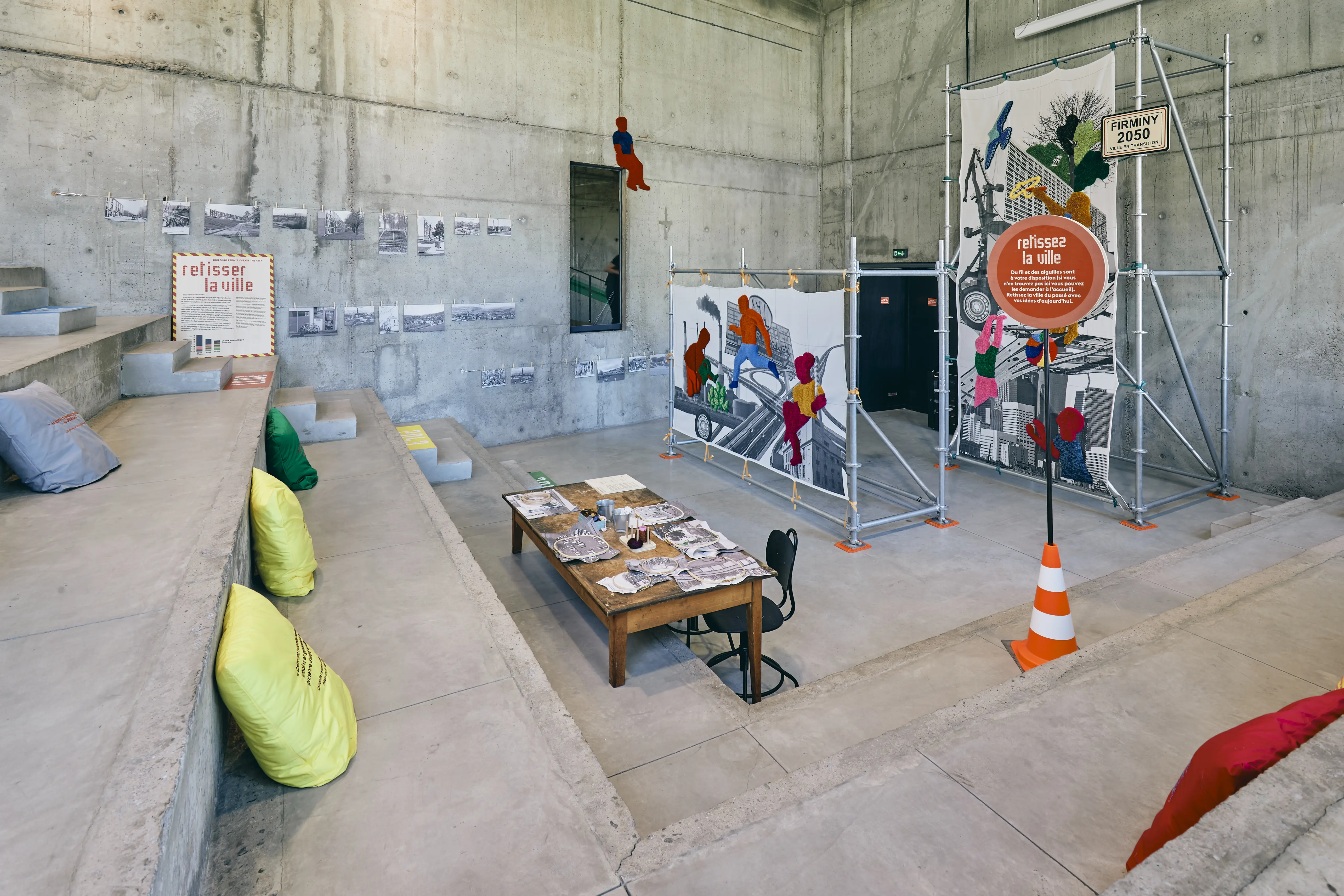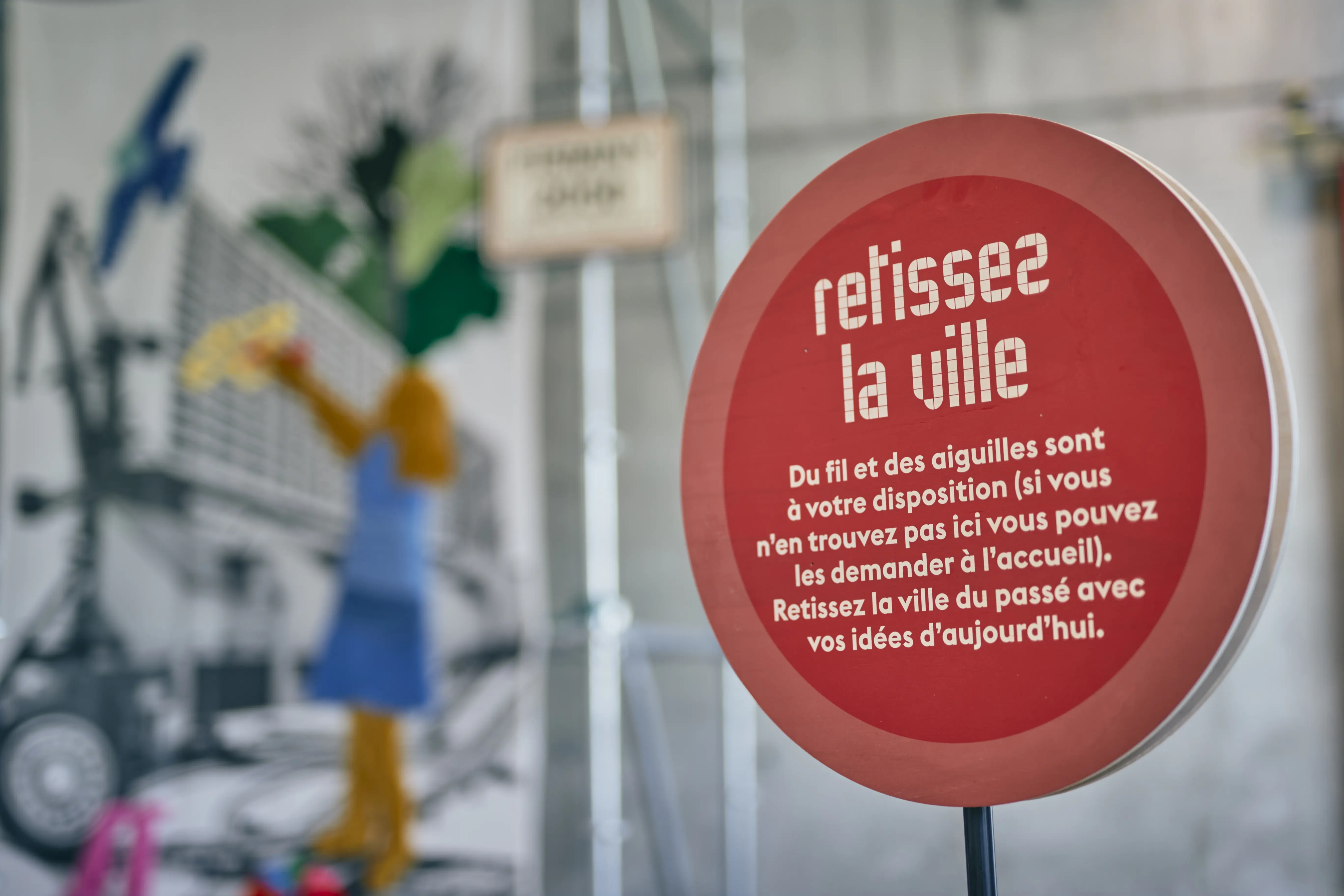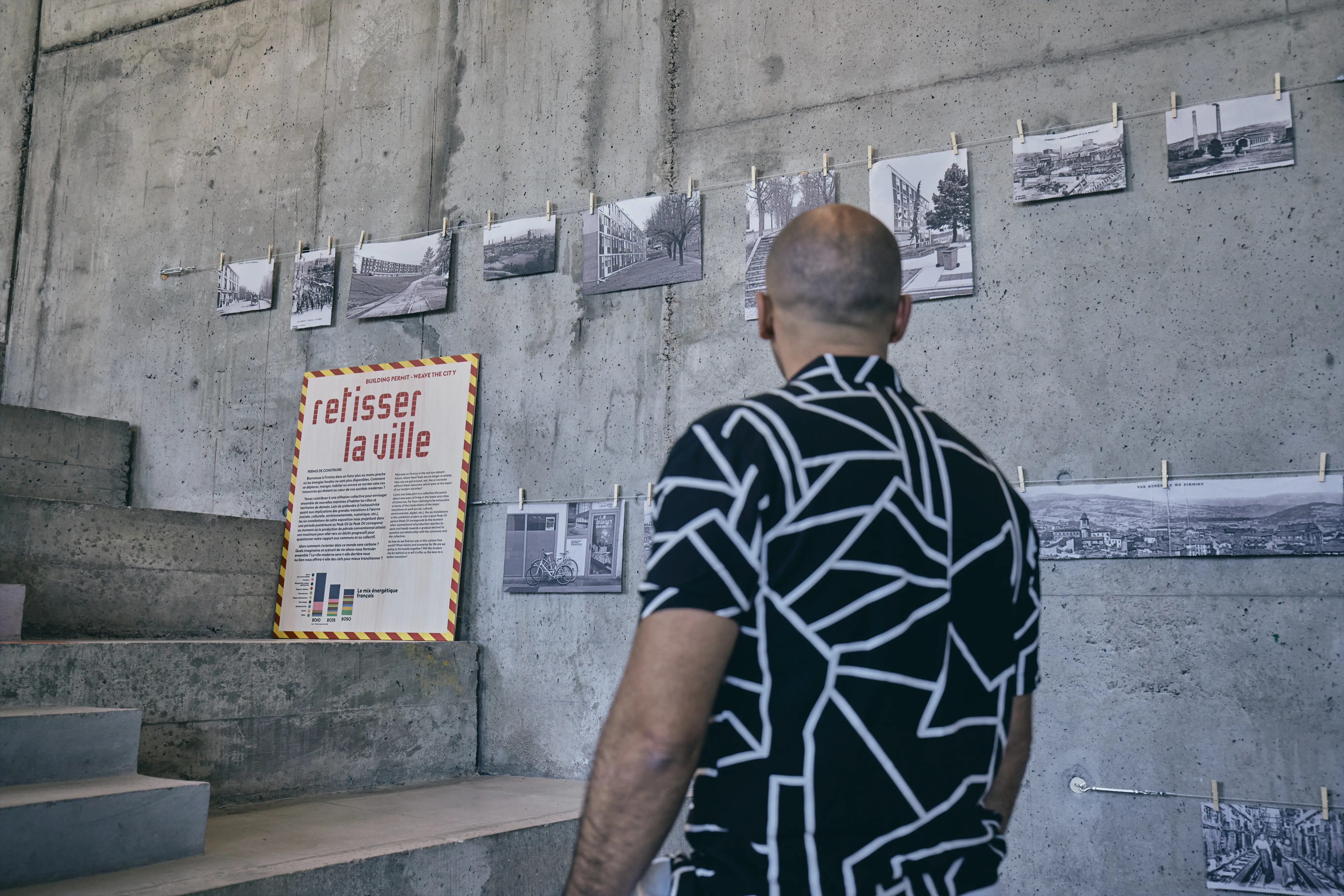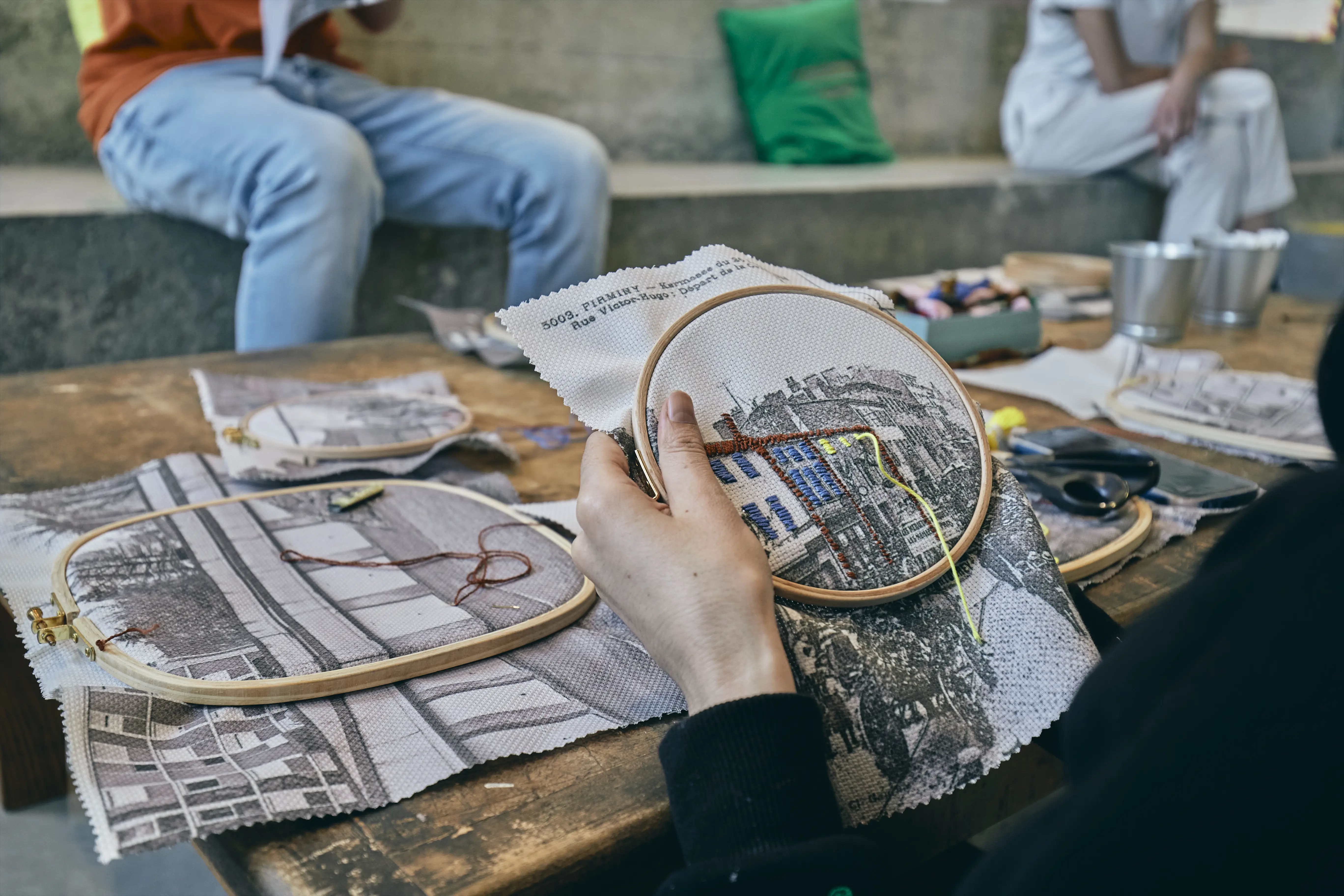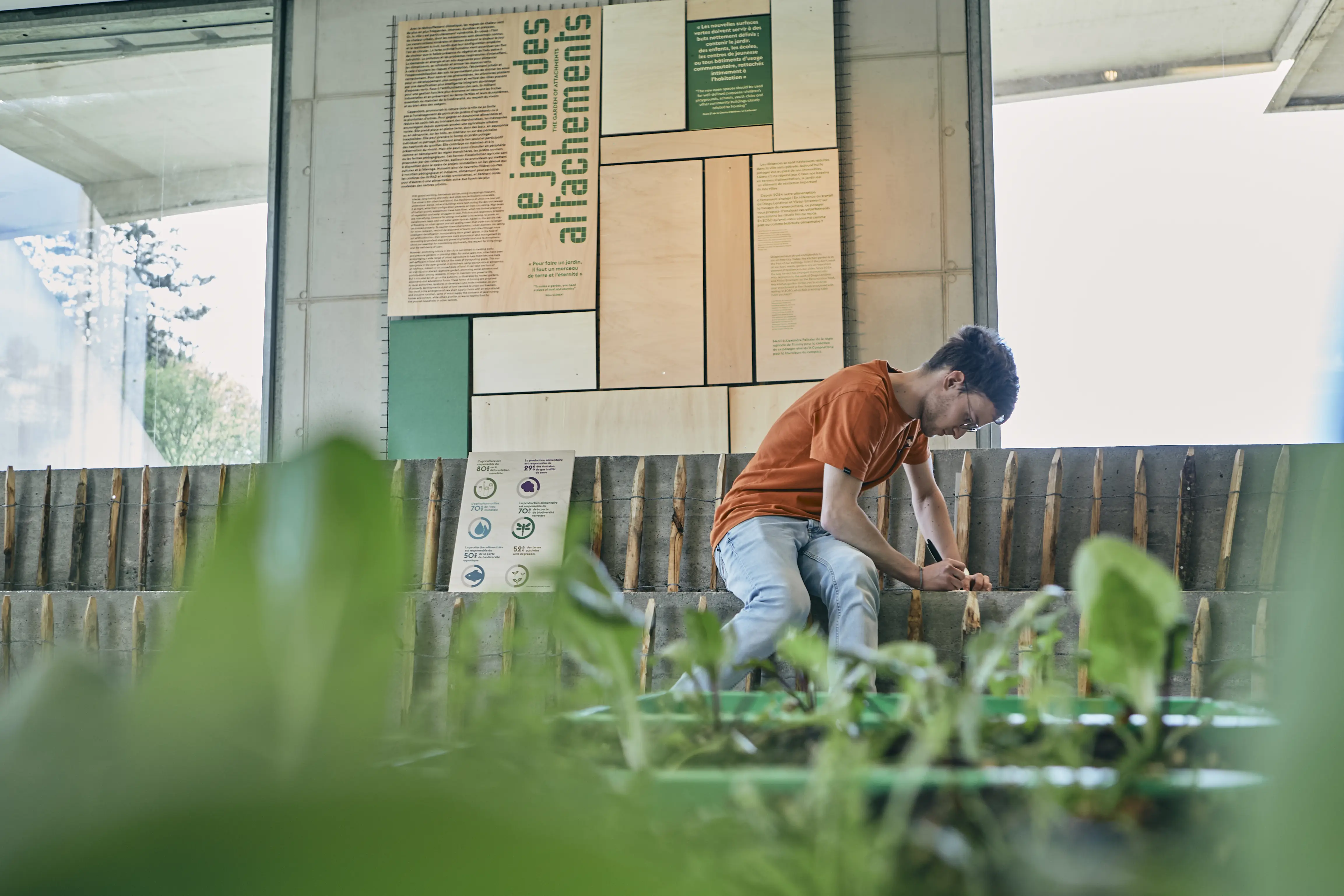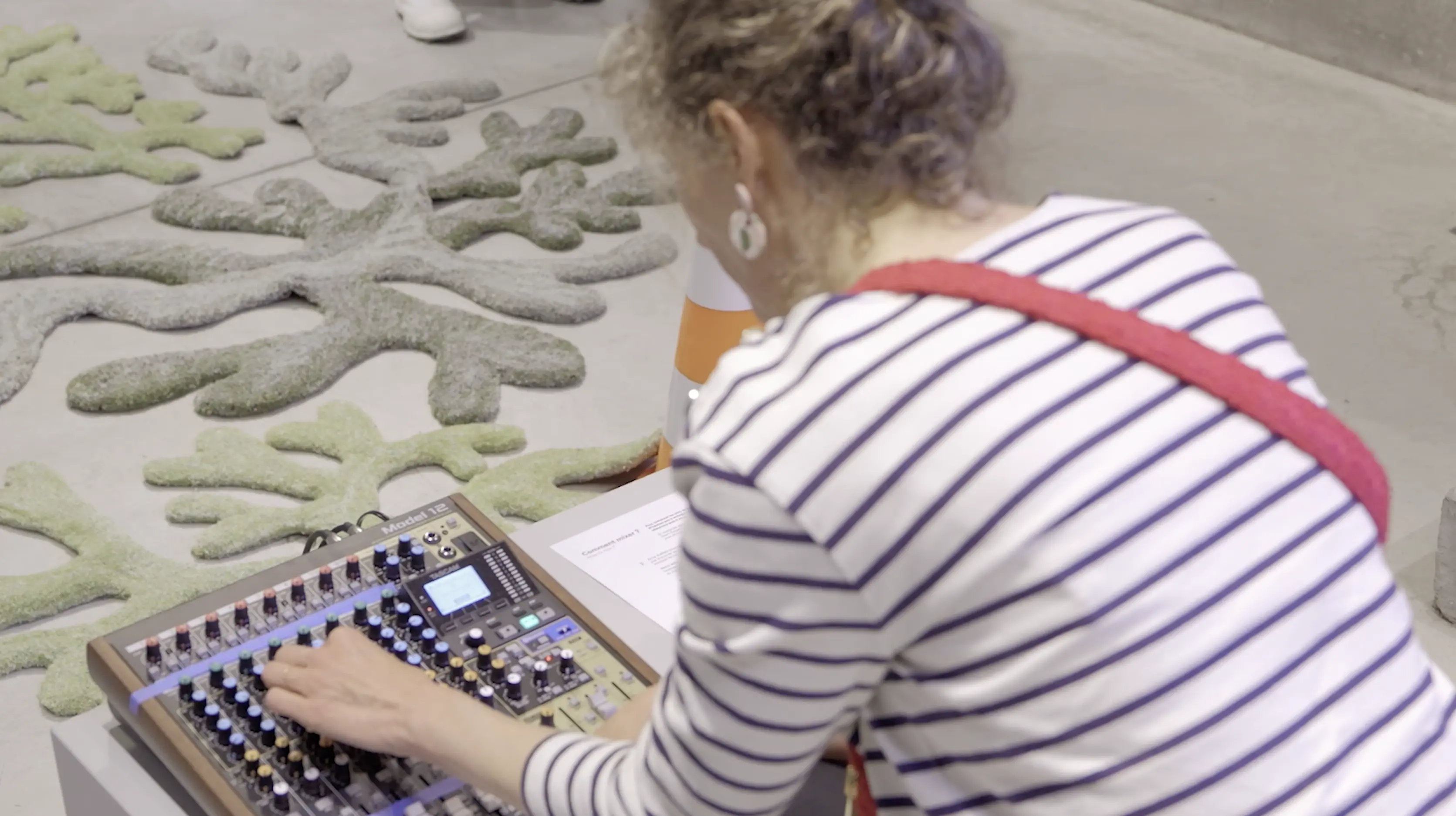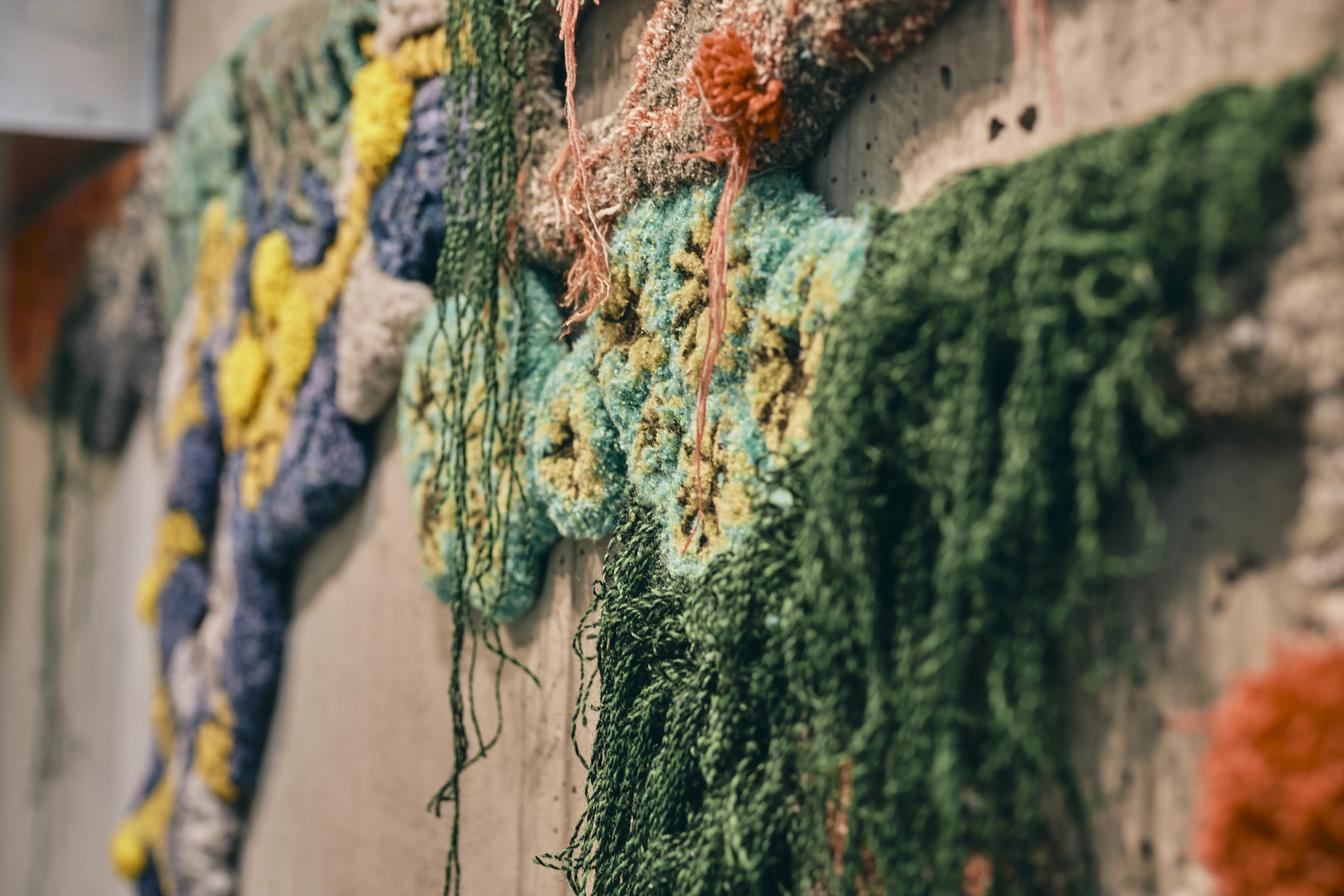Street of Transitions, weaving the city of tomorrow
Site Le Corbusier, 2024
The exhibition "Street of transitions, weaving the city of tomorrow" looks at the city of the future from the perspective of the end of fossil fuels. To this end, visitors are offered six scenarios for ecological redirection, looking at our urban social spaces, our means of transport, our food supply and the noise in the city..... In addition, six actions invite the public to weave, sow, draw and recompose the city of tomorrow that is already here. It is an invitation to a transition, a bifurcation, a redirection or a revolution... A change of model for the fabric of the city.
Room 1 overview.
"80% of the city of 2050 is already here, 20% remains to be built". Christelle Leconte and Sylvain Grisot, 2022, "Réparons la ville", Apogée. In this first installation, visitors are invited to pick up a canvas printed with archive photographs of the city of Firminy and embroider their own proposals for the city in transition.
Overview of the Room 2 The Big Dive.
"If you go to the forum, if you go to the spectacle, if you go to the baths and you wear a toga, you are a Roman citizen". Nero. The municipal swimming pool is a commonplace at the heart of our cities and our democracies. A place to "recreate" the body, it helps to reduce social inequalities by teaching people to swim. However, by 2022, a number of pools will have closed their doors due to rising energy costs. In this room, visitors are invited to write a postcard from 2050 to someone in 2023 and then leave it in a pool locker.
Overview of the Room 3 The Relational Street .
"… The 21st century is becoming the century in which we must rethink streets. The transformation must be more comprehensive and cannot be reduced to the confrontation between bicycles and cars or the simple addition of yellow and white lines on asphalt. The street is not just ‘a pipe designed solely for movement.’ History shows that the street has a civic and relational function. It is the link to the city’s exterior; it is at the heart of our democracies. It is now time to restore its place." Excerpt from the exhibition text. In this room, visitors are invited to take a piece of cardboard from the yellow bin and write down their proposal for bringing the street to life.
Views of Room 4 of the exhibition The Garden of Attachments.
In this room, visitors are invited to reflect on their attachments to food and the rituals surrounding meals. Like a wish tree, visitors write their attachments on ribbons, which they can then tie to the garden fences.
Views of Room 5 of the exhibition Finding the Right (Re)Direction.
What mobilities in 2050? How do we navigate between the discourse of certain companies promising autonomous cars and space travel and that of transition researchers calling for greater sobriety? In this room, visitors are invited to "graffiti" over advertising posters. What kinds of societies do you think emerge behind these advertisements?
Views of Room 6 of the exhibition "In Resonance". Textile artwork "Immiscions" by Béatrice Baulard.
"Since the 18th century, humans have gained freedom, knowledge, and comfort, convinced that tomorrow will be better than yesterday. This forward momentum stems from three factors: economic growth, technological acceleration, and cultural innovation. This combination drives modern societies into a state of constant acceleration to maintain equilibrium—developing and innovating ever faster just to stay in the same place, trapped in what Hartmut Rosa calls 'frantic immobility.' For a long time, this vision of progress justified working hard so that future generations could have a better life. But since the 2000s, this momentum seems to have waned, replaced by a new objective: ensuring that future generations do not fall behind. To counteract this acceleration and its toxic cycle—to respond to the loss of a 'sense of movement'—sociologist Hartmut Rosa introduced the concept of resonance, which emerges when humans engage with something they do not control because they cannot own it."
Credits: Studio Norde.
Thanks to: Charles Ambrosino, Frank Le Bail, Rachid Kaddour, Christelle Morel-Journel et Valérie Sala Pala For their involvement in this project.
Design:
Caroline Manowicz and Costanza Matteucci.
Curators:
Géraldine Dabrigeon, Louise Pédel, Caroline Manowicz, Costanza Matteucci.
Production:
Pacoret Version originale, La turbine créative, Express Carrelage.
Creation of a textile artwork. "Immiscions" :
Béatrice Baulard.
Commissioner: Site Le Corbusier
